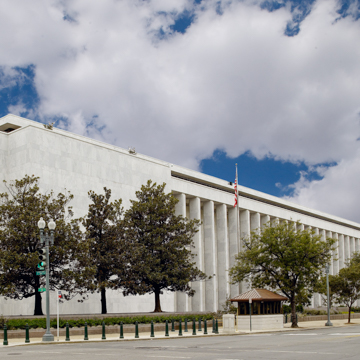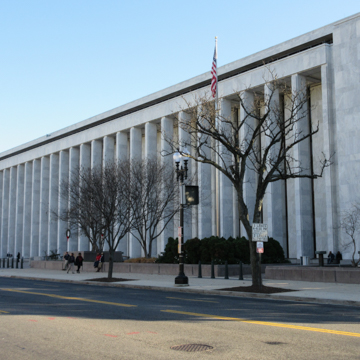Nationwide concern among architects about the mundane quality of the Madison Building led to a federally mandated AIA committee review of its design in 1967. However, no perceptible changes were made to the monolithic, marble-clad rectangle, measuring 500 feet by 400 feet, that rises 70 feet to the first setback, 80 feet to the second, and 100 feet to the top of the penthouse mechanical floor. Each facade is essentially the same, with long ranges of spindly pillars spanning six aboveground stories held between massive unarticulated walls. On one level these walls were intended to be modernized interpretations of classical facades in deference to its neighbors, and on another, mammoth (and ludicrous) visual metaphors of books on shelves contained by bookends. The sculpted screen of bronze books above the entrance was designed by Frank Eliscu and installed in 1983. Each of the four quadrants is color coded so one can determine his or her location within the architecturally undifferentiated interiors.
You are here
Library of Congress, James Madison Building
If SAH Archipedia has been useful to you, please consider supporting it.
SAH Archipedia tells the story of the United States through its buildings, landscapes, and cities. This freely available resource empowers the public with authoritative knowledge that deepens their understanding and appreciation of the built environment. But the Society of Architectural Historians, which created SAH Archipedia with University of Virginia Press, needs your support to maintain the high-caliber research, writing, photography, cartography, editing, design, and programming that make SAH Archipedia a trusted online resource available to all who value the history of place, heritage tourism, and learning.











